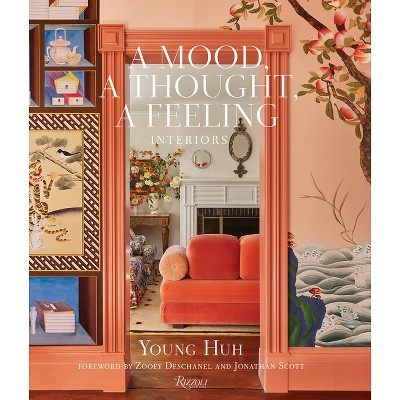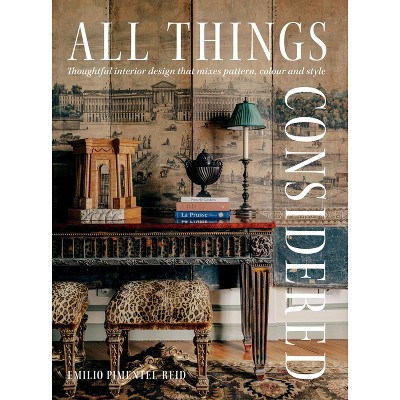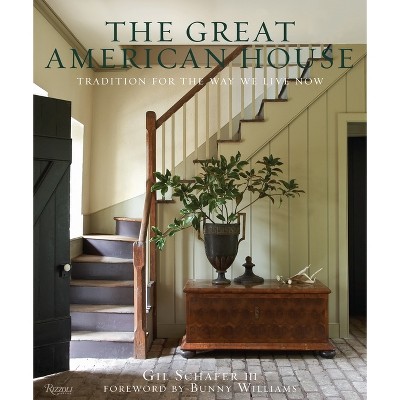Sponsored

Reassembling the Social Interior - (Studies in Design and Material Culture) by Helen McCormack & Jennifer Gray & Anne Nellis Richter (Hardcover)
In Stock
Sponsored
About this item
Highlights
- At the intersection of heritage, design history and contemporary art, this book offers new perspectives on the way historical interiors are encountered by, and viewed and presented for, present-day audiences.
- About the Author: Jennifer Gray is a Lecturer in the School of Design at Edinburgh College of ArtAnne Nellis Richter is an Independent Scholar and Adjunct Faculty at Smith CollegeHelen McCormack is Reader in Art and Design History in the department of Design History & Theory at Glasgow School of Art
- 264 Pages
- Architecture, Interior Design
- Series Name: Studies in Design and Material Culture
Description
About the Book
This book is an interdisciplinary intervention into the history of interiors and collections, museology, archaeology, architectural history, art, and design history, and demonstrates a range of innovative methods and approaches, useful to historians, curators, and custodians of historical sites, spaces and objects.Book Synopsis
At the intersection of heritage, design history and contemporary art, this book offers new perspectives on the way historical interiors are encountered by, and viewed and presented for, present-day audiences. Many studies have highlighted the historical significance and meanings embedded in the landscape, architecture, decoration and objects to be found within houses and homes. But what about the social meanings of these spaces?
Central to this book is the idea that in reflecting, remaking and reimagining historical interiors, the contributions of artists, designers and craftspeople should be foregrounded in constructing ideas of authenticity, transparency, and materiality in the making process. The chapters present a range of case studies that reflect upon on how historical interiors are remade and reimagined by looking in and out; at how a reassembling of spaces ought to avoid 'a shrinking definition of the social itself' (Latour, 2005). Surveying a range of interior 'types' from a number of historical periods, the book includes contributions from practitioners, scholars and makers. From reimagining rooms of ancient Scottish homes to the interior and exterior worlds of specific historical figures, including Hugh Lane and Beatrix Potter, the book considers how these spaces have powerful significance for contemporary audiences, particularly in ways that are relatable to shared experiences of work, leisure, family, community, power and politics. This book will be of interest to scholars of the history of interiors and collections, museology, archaeology, architectural history, art, and design history, as well as curators and caretakers of historical sites, spaces and objects.From the Back Cover
At the intersection of heritage, design history and contemporary art, this book offers new perspectives on the way historical interiors are encountered by, and viewed and presented for, present-day audiences. Many studies have highlighted the historical significance and meanings embedded in the landscape, architecture, decoration and objects to be found within houses and homes. But what about the social meanings of these spaces?
Central to this book is the idea that in reflecting, remaking and reimagining historical interiors, the contributions of artists, designers and craftspeople should be foregrounded in constructing ideas of authenticity, transparency, and materiality in the making process. The chapters present a range of case studies that reflect upon how historical interiors are remade and reimagined by looking in and out; at how a reassembling of spaces ought to avoid narrowing our understanding of the social itself. Surveying a range of interior 'types' from a number of historical periods, the book includes contributions from practitioners, scholars and makers. From reimagining rooms of ancient Scottish homes to the interior and exterior worlds of specific historical figures, including Hugh Lane and Beatrix Potter, the book considers how these spaces have powerful significance for contemporary audiences, particularly in ways that are relatable to shared experiences of work, leisure, family, community, power and politics. This book will be of interest to scholars of the history of interiors and collections, museology, archaeology, architectural history, art, and design history, as well as curators and caretakers of historical sites, spaces and objects.About the Author
Jennifer Gray is a Lecturer in the School of Design at Edinburgh College of Art
Anne Nellis Richter is an Independent Scholar and Adjunct Faculty at Smith College
Helen McCormack is Reader in Art and Design History in the department of Design History & Theory at Glasgow School of Art

















